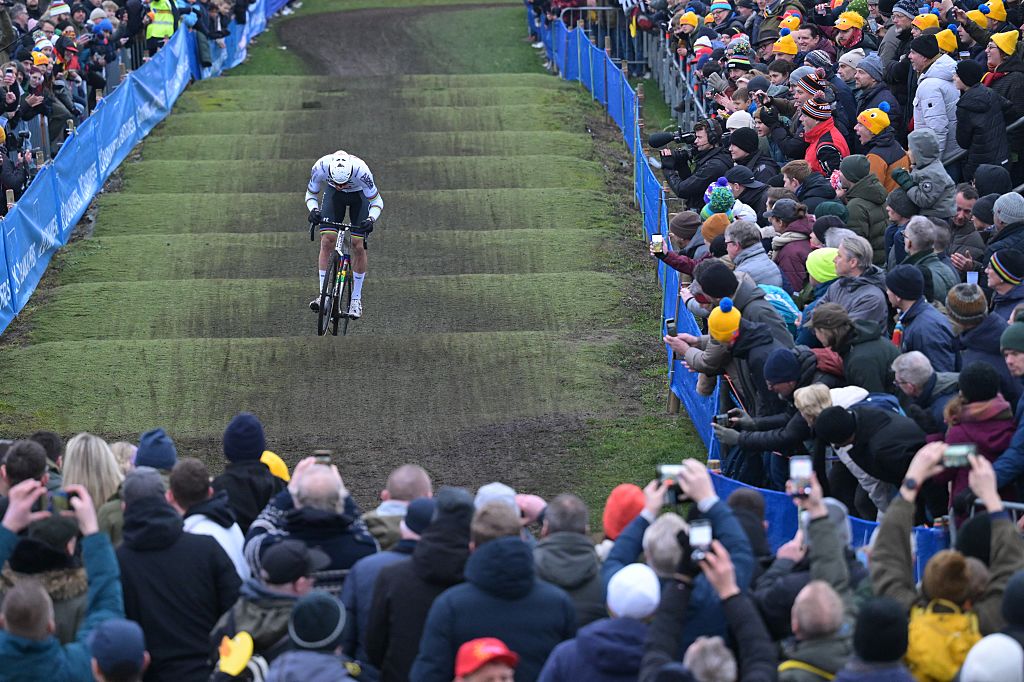10 conclusions from the first Paris-Roubaix Femmes
Maximum anticipation was met with a monumental day of racing at the first-ever women's Hell of the North but ASO still have work to do when it comes to equality
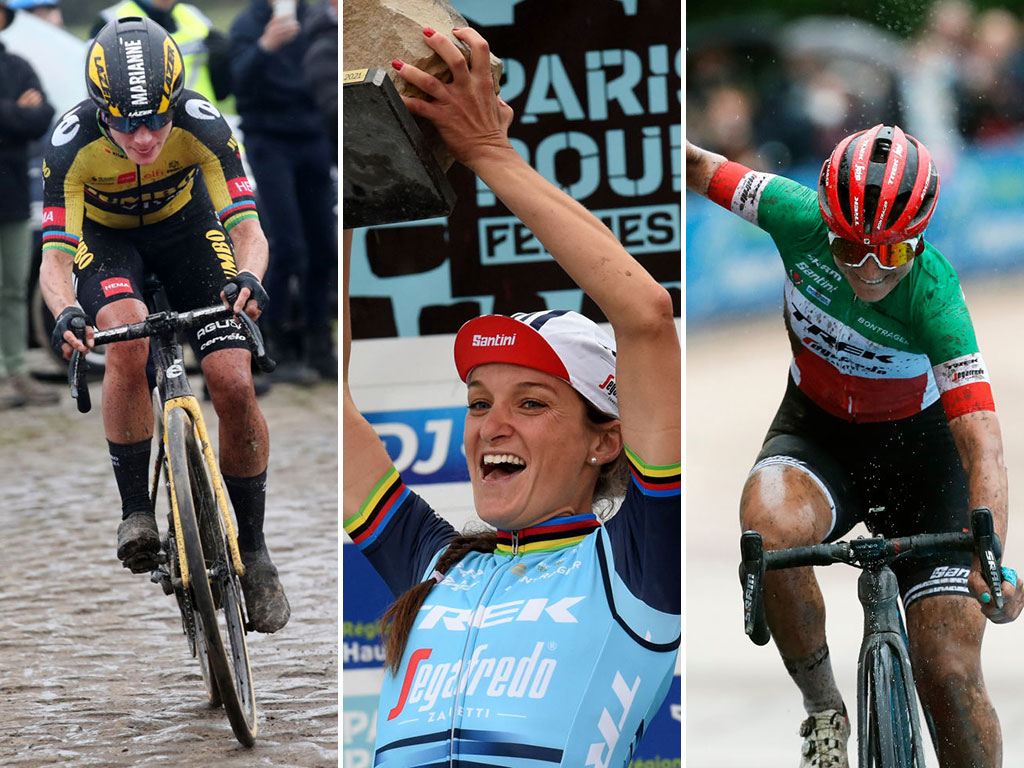
History was made at the first-ever edition of Paris-Roubaix Femmes. The women's peloton competed for the prestigious victory across the famed pavé and into the velodrome in Roubaix where the first woman - Lizzie Deignan - was crowned champion of the Hell of the North.
The women's peloton raced 116km and 29.2km of cobblestones between Denain and Roubaix on Saturday, on a day that welcomed on-and-off rain, mud and an incredible backdrop across 17 sectors of pavé for what was a spectacular of a race.
Trek-Segafredo's Deignan made her winning move ahead of the first four-star cobbled sector, Hornaing à Wandignies at 31.1km into the race, and she never looked back, circling the velodrome and taking a solo win in Roubaix.
Cyclingnews highlights the main conclusions from the first-ever Paris-Roubaix Femmes.
Monumental moment
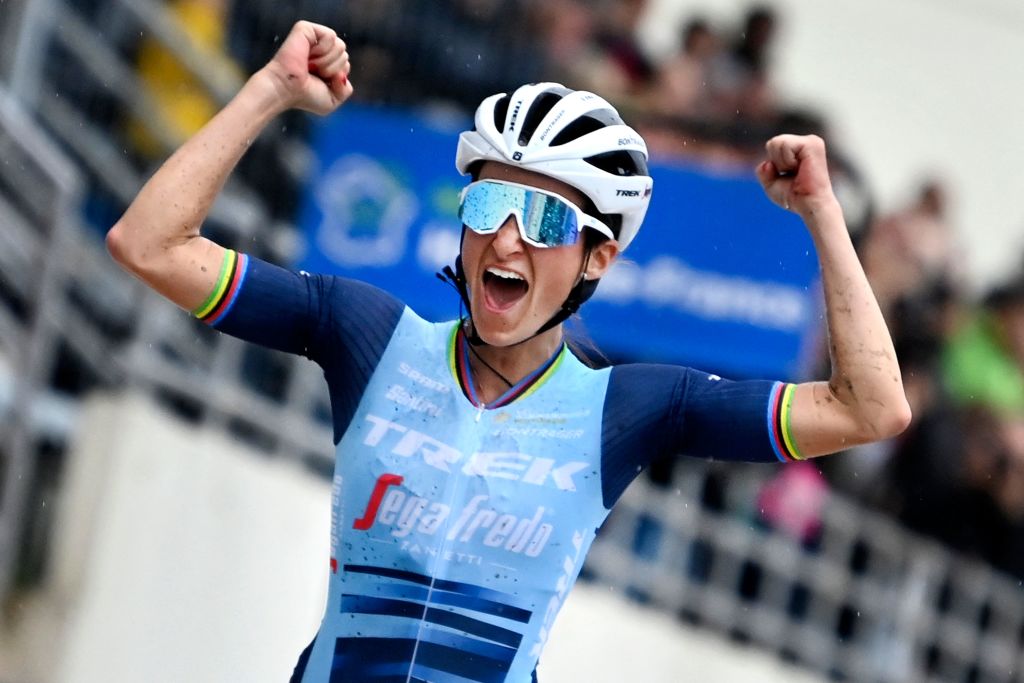
It cannot be understated what a monumental moment the first women's Paris-Roubaix is for the sport. For too long, the largely male decision-makers in the sport have thought women too weak to power across the jarring cobblestones, too timid to tackle a race of such difficulty head-on, or too frail to risk the inevitable crashes.
Lizzie Deignan's heroic 80+ kilometre solo attack was as inspirational as any victories by Tom Boonen or Fabian Cancellara and etched her name into the history books along with legends like Eddy Merckx.
Deignan raced across the mud-slick cobbles of the Mons-en-Pévèle and Carrefour de l'Arbre, kept her bike upright and continued powering to victory in a masterclass demonstration of determination, ferocity and skill, her blistered hands chattering against her handlebars as the mud flicked up her back and into her face.
The latest race content, interviews, features, reviews and expert buying guides, direct to your inbox!
Marianne Vos and Elisa Longo Borghini both crashed at least once, if not more, but got back up and fought to the podium showing the kind of never-say-die attitude that makes the sport so beautiful.
For 125 years, riders have watched their heroes battling across the farm tracks of Northern France and been inspired to find their town's worst road and try to ride it. Now, the next generation of female racers can look at the images of this race, see themselves represented in the images, and aspire to the same level of greatness.
All 129 history-making women who started, the 61 who were classified as finishers and the 33 more who were ranked outside the time limit, proved that the outmoded perception of women as less than their male counterparts can absolutely be chucked in the bin. They are professional athletes with all the expertise of their male counterparts and should be afforded the same opportunities. (LW)
Maximum anticipation
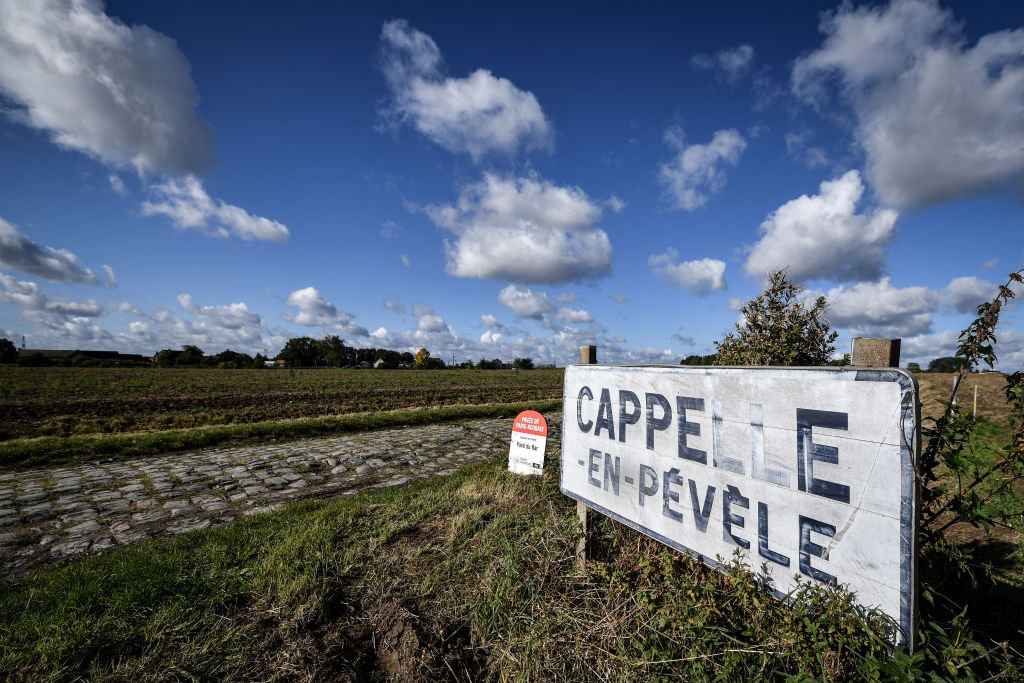
There was no mistaking the enthusiasm for the first edition ever of the Paris-Roubaix Femmes, with teams wholeheartedly throwing their technical and PR resources at the challenge, riders out checking the course repeatedly and many also generously sharing their wistful musings. That tingle of excitement running up the spine was activated again and again, particularly when pictures emerged of an exalted figure in the women’s peloton, Marianne Vos, standing in the revered shower stalls of Roubaix where the dirt, sweat and blood, as well as both tears of both joy and disappointment, have been washed away after the Paris Roubaix for generations.
The introduction of a women’s edition of the Paris Roubaix Femmes, while long-awaited, was somewhat of a surprise when it was first announced as an addition to the 2020 COVID-19 pandemic delayed calendar. A welcome surprise yes, but stacked in among the catch-up months at the end of 2020, it’s hard not to feel there may not have been the chance to fully savour the event. So, while perhaps not going so far to say that the initial delay and subsequent one in the spring this year was welcome, it has had its benefits. The disappointment of delay has, perhaps made its eventual arrival all the sweeter.
It too, has had the more practical outcome of allowing riders more time to prepare. It is often said that there is no comparison for the cobbles of the Paris-Roubaix and it sounds like that for some, a bit of time to get used to them certainly came in handy. One of the top pre-race favourites, Ellen van Dijk, said before the race that on her first recon she certainly wasn’t a fan of the cobbles, but cried, though after four more visits got better and liked the course. In the end, it wasn't to be for Van Dijk but her two teammates – Deignan and Elisa Longo Borghini – stood on the podium after a thrilling battle for the cobble trophy and, for Deignan, it was the distinction of being named the first winner of Paris-Roubaix Femmes. (SG)
Anything can happen at Paris-Roubaix
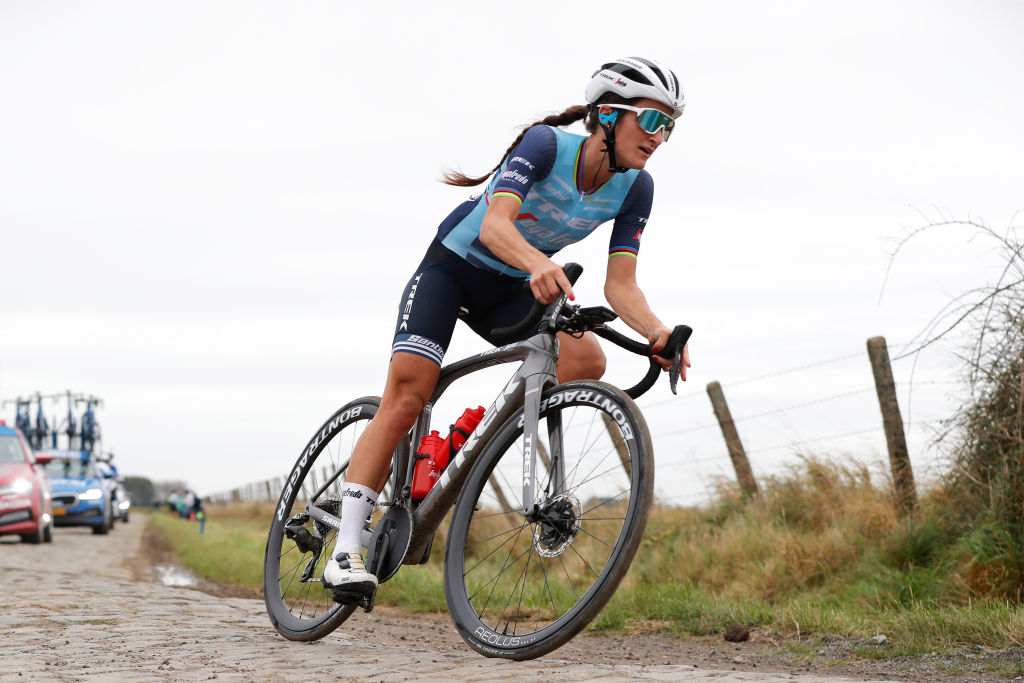
Winning was not a part of the plan for Lizzie Deignan when she woke up in the morning to race the first-ever Paris-Roubaix Femmes. True, she had targeted the event all season, but when the day finally arrived, she moved into a support role, all-in for her teammate and pre-race favourite Ellen van Dijk.
In fact, Deignan started the race as the third-ranked contender for her team but her attack ahead of the very first cobble sector, Hornaing à Wandignies, just 30km into the race, astonishingly and unintentionally, ended up being the winning move of the day.
It seemed a big risk, in the moment, but what an incredible reward. Deignan was willing to put herself out there and lose the race for her teammate, and when she saw her gap explode to 2:40, she knew the race was then hers to lose.
“This was really not the plan. I needed to be at the front in the first cobble section to protect my leaders. I was kind of the third rider today, actually. I looked behind after the first cobbles, there was a gap, and I thought, ‘well, at least, if I’m in the front, they have to chase me’, so I just kept going,” Deignan said.
If we've learned anything from 125 years of the men’s Paris-Roubaix, it’s that anything can happen on the cobbles during the Hell of the North – and anyone can win. (KF)
€91,000 for men vs €7,005 for women
The celebrations surrounding the inclusion of women at Paris-Roubaix was dampened when it came to light that organisers ASO offered a prize purse of €91,000 for the men and just €7,005 for women.
Discussion over prize money inequality in cycling has come to the forefront several times this year beginning at Omloop Het Nieuwsblad where the winner of the women’s race Anna van der Breggen earned €930, which was just five per cent of the €16,000 that Davide Ballerini earned for winning the men’s race. At that time, Flanders Classics CEO Tomas Van Den Spiegel has stated that the higher priority was placed on first-ever live coverage of the women’s race and that the organisation would work toward equal prize money in 2023.
Lizzie Deignan will go down in history as the first winner of Paris-Roubaix Femmes but she would only have earned €1,535 for such a momentous victory, arguably one of the biggest and most prestigious wins of her career. The rider who wins the men’s race on Sunday will take home €30,000.
The UCI creates the unequal prize payout minimum requirements for men’s and women’s races, and while ASO paid the required €1,535 winner purse for the women, it increased the men’s winner’s purse by 50 per cent to reach €30,000.
Deignan’s team Trek-Segafredo stepped in to offset the difference with a promise to match the men’s winner prize money for their women’s Paris-Roubaix winner.
It's disappointing to see the richest and most powerful organisers in the sport are content with their decision to offer the women's peloton such a small prize payout while also increasing the men's purse, and then accepting that the teams make up the difference.
If ASO want to continue to receive the celebration and praise for finally creating a women's Paris-Roubaix, 125 years after the men's inaugural event, it will also need to address inequalities in prize payouts and television coverage. (KF)
Vos gracious in defeat
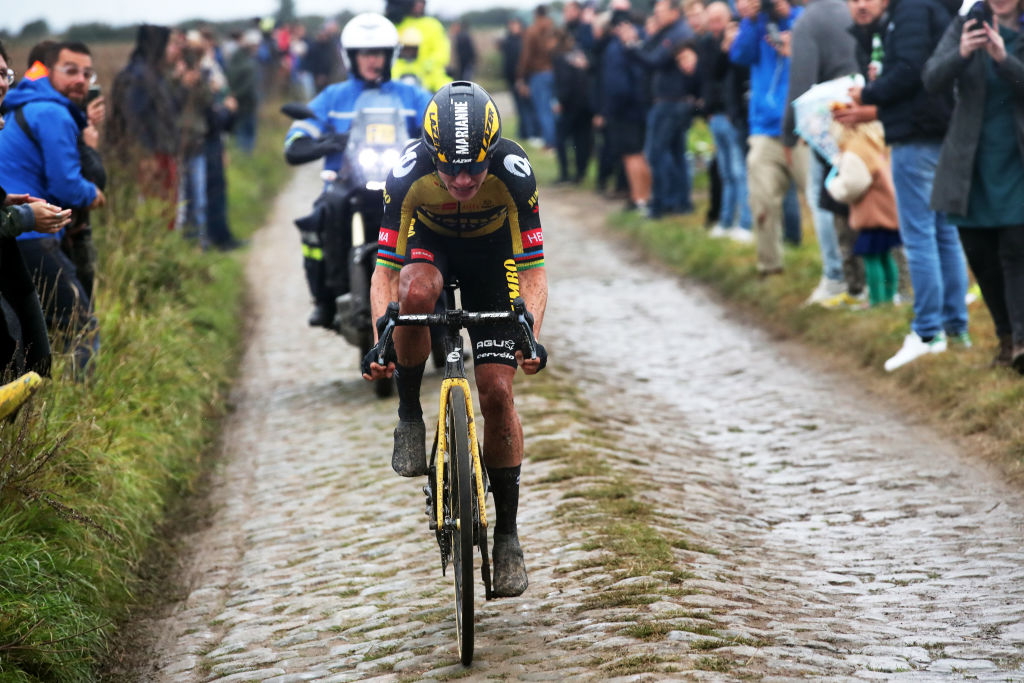
“When gold is close, silver hurts” were the words of Marianne Vos after losing the sprint for the rainbow jersey to Italy’s Elisa Balsamo at the UCI Road World Championships just one week ago. The former three-time road race world champion would be forced to take second place at the road Worlds for the sixth time in her illustrious career.
Vos was visibly upset and in tears, but while tensions heightened between her Dutch teammates over the tactics that had gone wrong, she simply and truthfully stated that she had lost the race to a faster rider, and for no other reason.
It was a painful moment for Vos but one that could be consoled with the knowledge that she would have another chance at victory at the first-ever Paris-Roubaix Femmes.
The photos of Vos visiting the famous shower stalls of Roubaix that circulated in the days ahead of the inaugural women’s race struck a chord with the cycling world.
Vos is one of the greatest cyclists of all time, a celebrated sports figure. That's not just because of her sparkling accolades – including 12 world championship titles across three disciplines, along with two gold medals in road and track racing at the Olympic Games and 30 career stage wins at the Giro – but also for her sportsmanship and her unconditional and life-long love of cycling.
The world wanted to see Vos win Paris-Roubaix Femmes. What we all got to witness was her strength, grit and determination as she gave everything she had to try to close the gap to Deignan to try to win the race.
She later admitted that she thought Deignan’s attack 30km into the race was too early. She also said that she had no regrets and that, “Deignan rode a very strong race and it's only deserved that she can collect her cobblestone.”
We all witnessed a humble champion, gracious in defeat. A true sports hero. (KF)
A wet Paris-Roubaix = carnage
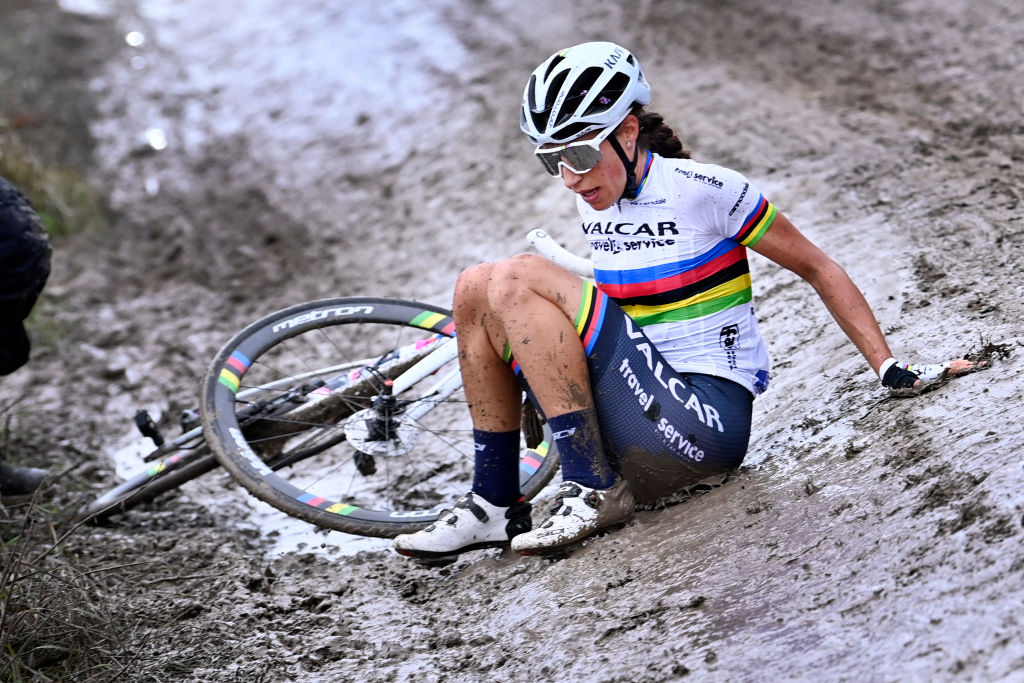
Just as we've seen in the 125 years of history of the men's race, a wet Paris-Roubaix with its mud-slicked cobblestones makes for a course that is barely rideable. Deignan was probably one of the few riders who didn't crash, although she went sideways more than once on the pavé. Being solo was a huge benefit when it came to avoiding falls.
We saw UCI Women's WorldTour leader Annemiek van Vleuten (Movistar) out the back before the cobbles even got started. We saw the new world champion Elisa Balsamo (Valcar) slide off the crown on Mons-en-Pévèle and fall on her backside but she still got back up and finished.
Favourites Ellen van Dijk (Trek-Segafredo), Sarah Roy (BikeExchange) and Emma Norsgaard (Movistar) all had heavy falls but fought to the finish. Even podium finishers Vos and Longo Borghini hit the deck but proved the old Paris-Roubaix adage true, that you never give up because anything can happen. (LW)
115km was not enough
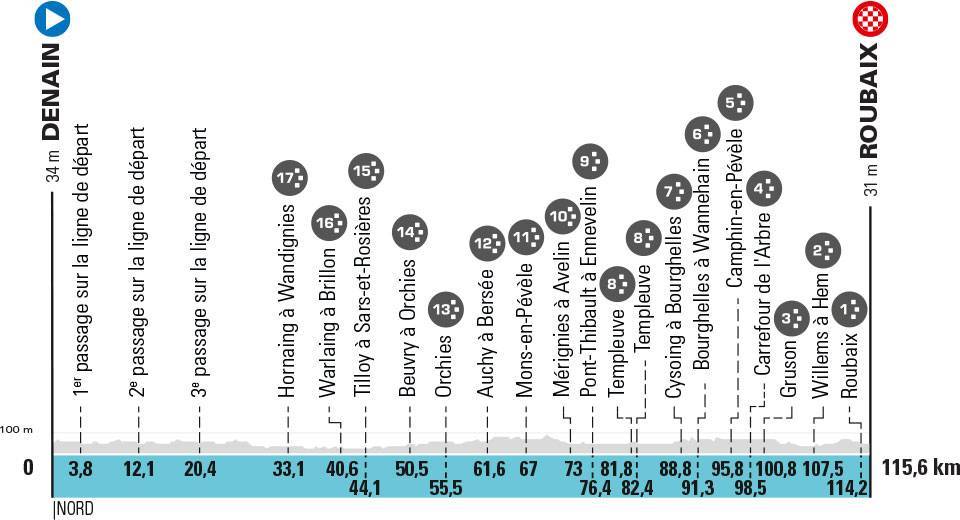
The ASO has a history of underestimating the abilities of the women's peloton and once again, they made the race too short.
It's great to have a women's Paris-Roubaix, but the 115-kilometre race went by in a flash. If it hadn't been wet, it would have gone by even faster. The men race for six, almost seven hours, while Deignan's winning time was less than three. Deignan finished with an average speed of 39.6kph, well above the fastest estimated schedule of 39kph.
Other ASO races – Liège-Bastogne-Liège and La Flèche Wallonne – are nearly four hours long and between 130 and 140km.
Marianne Vos put in such an incredible effort to slash Deignan's lead in the closing 20km that one has to wonder what might have happened had the race been 15-20km longer.
Although the riders, who were completely spent after the race might disagree, less than three hours of racing for the women is not enough for a WorldTour race. In the future, when the women have more experience on the Roubaix cobbles and the conditions are better, the ASO should tweak the course to give riders more kilometres of racing. It would give more time to fight back from punctures or crashes and make for a more strategic race. (LW)
No Trouée d’Arenberg – did it matter?
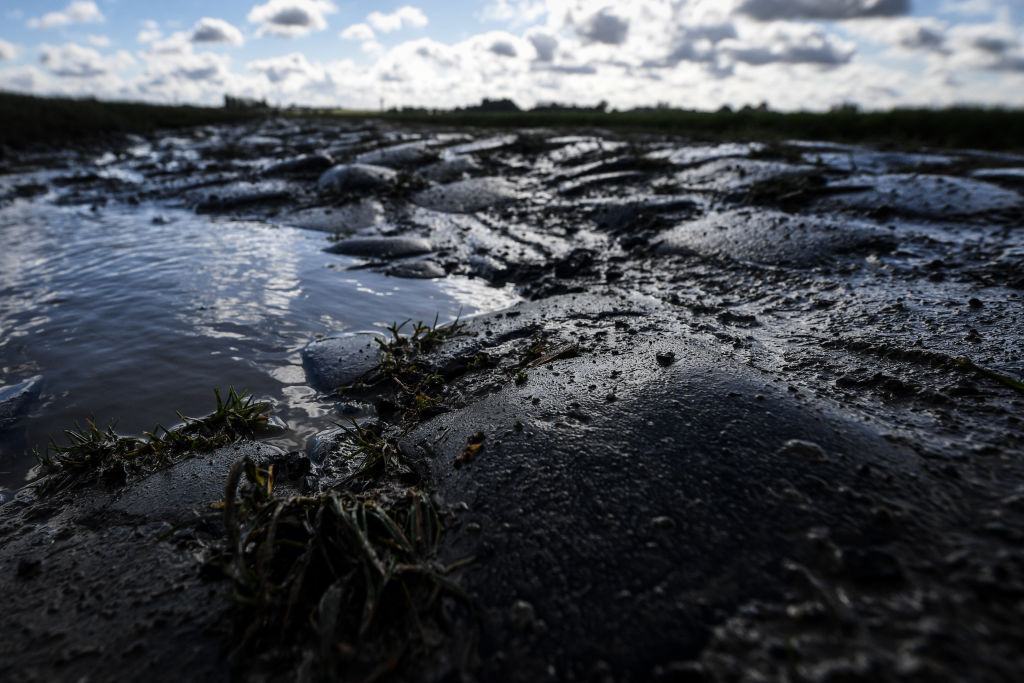
Every classic race has its landmark, some feature that defines that race and makes it instantly recognisable. For Paris-Roubaix, this is the Trouée d’Arenberg: The five-star pavé sector that cuts through the forest in a straight line, with the run-in overlooked by pit frames of coal mines down which Jean Stablinski worked before becoming a pro cyclist and later discovering this and other cobblestone roads for the race, a railway crossing just before the entrance, the memorial to Stablinski at the entrance, a bridge across the road shortly after the start, 2,300 metres of irregular, gnarly cobblestones, and a sharp left turn at the exit, is the icon of the French classic.
It is said that there are three ways to immortalise yourself in Paris-Roubaix: Being the first rider onto the Trouée d’Arenberg, the first rider into the velodrome in Roubaix, or the first rider across the actual finish line.
And yet, when the route of the inaugural Paris-Roubaix Femmes was announced, the Trouée d’Arenberg was conspicuously absent. The two other five-star sectors, Mons-en-Pévèle and Carrefour de l’Arbre, were included, and the start town of Denain is less than ten kilometres to the south of the entrance to the Arenberg Forest, so it wasn’t a question of logistics.
It was a question of safety: In the men’s race, Arenberg comes as the 12th of 30 pavé sectors, more than halfway into the race and with a selection already made. In this inaugural women’s race, it would probably have been the very first Paris-Roubaix cobblestones for the women’s peloton, after less than 30 kilometres of racing.
The Arenberg cobbles are vicious enough where they are in the men’s race and infamous for dangerous, even career-ending crashes. There were plenty of crashes on the pavé sectors that were included in the women’s route, and one of the riders to go down was Annemiek van Vleuten (Movistar Team) who fractured her pubic bone, ending her 2021 season.
The first-ever Paris-Roubaix Femmes was absolutely one of the hardest races on the women’s calendar, evidenced by the time gaps and the fact that only 61 riders finished within the time limit. It was the right decision by race organisers ASO to err on the side of caution and rider safety and build the race parcours gradually instead of throwing everything at the riders at once. There will be more editions of Paris-Roubaix Femmes, and the Trouée d’Arenberg is not going anywhere.
“It was our first Roubaix, and I think all of us have gained a huge amount of experience. It wasn’t to be underestimated – the race is very difficult and very challenging and dangerous. Of course, there is going to be development – I don’t expect that this race is going to be the same in 10 years’ time, but I think it has been a good start,” said Lizzie Deignan (Trek-Segafredo). (LK)
Show the whole race on TV!
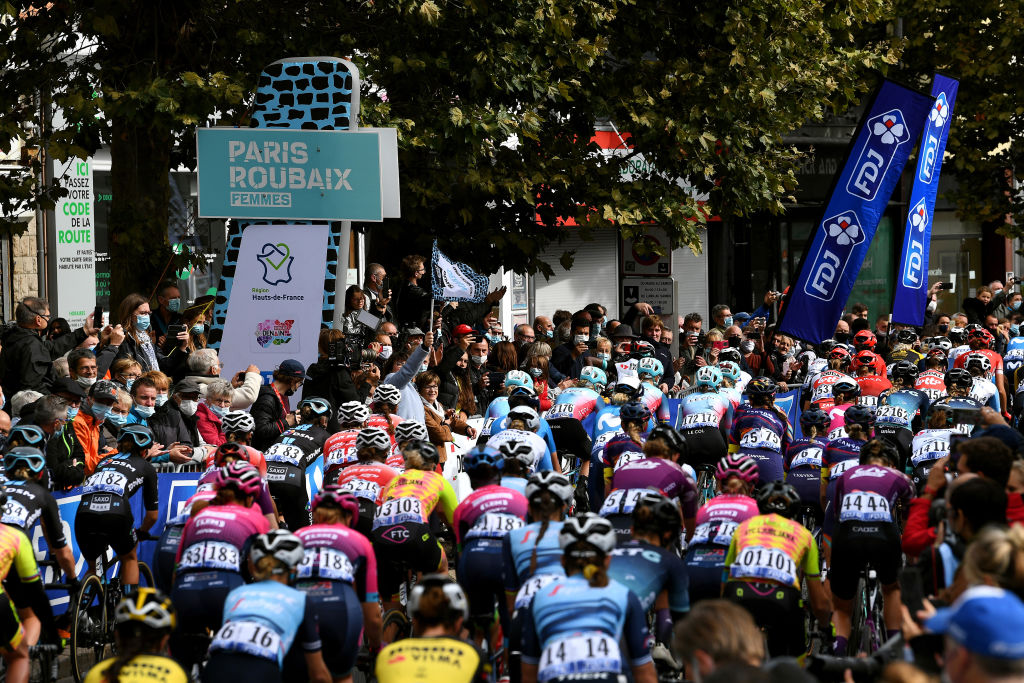
History was made with the inaugural edition of Paris-Roubaix Femmes. The first editions of most classic races happened decades or even over a century ago – 125 years for the men’s Paris-Roubaix. It is not something we usually experience these days, and it is even rarer that it happens so predictably, with a schedule for the whole affair.
There was a chance to bring this moment in time to viewers all over the world, from committed followers of women’s cycling to cycling fans who until now had mainly watched the men race and even to new audiences that are yet to discover cycling – and to little girls who may be inspired by the sight of the best women’s cyclists in the world taking on this monumental race for the very first time.
Everything about this race was going to be historic: The first sign-in in Denain, the first line-up on the start line, with new world champion Elisa Balsamo (Valcar-Travel & Service) and a host of national champions at the front, the first flag to be dropped, the first attacks, the first pavé sector, the first winning move.
As it happened, all of us who weren’t at the race did not have the opportunity to experience any of these. When the TV cameras finally turned on with 52 kilometres to go, eventual winner Lizzie Deignan was already almost two minutes ahead, having attacked more than 30 km earlier. There was recorded footage from the sign-in and from the entry to the first pavé sector, but these were mere glimpses.
With all the attention that Paris-Roubaix Femmes rightly received, also profiting from being held the day before the men’s race, it appears incomprehensible that ASO, the biggest race organiser in cycling and very well-versed in creating narratives and telling stories, opted to only show half of the race.
It can only be hoped that lessons are learnt, and that the second edition of Paris-Roubaix Femmes in April 2022 will have start-to-finish live coverage. In this first edition, we did see the finish but the start, with all its historic firsts, happened in a vacuum as far as the live broadcast was concerned. There will never be an inaugural edition of Paris-Roubaix Femmes again, and nobody will ever see full start-to-finish footage of this inaugural edition. The opportunity to capture this history on film from the very beginning is forever lost. (LK)
The wait for a French winner continues
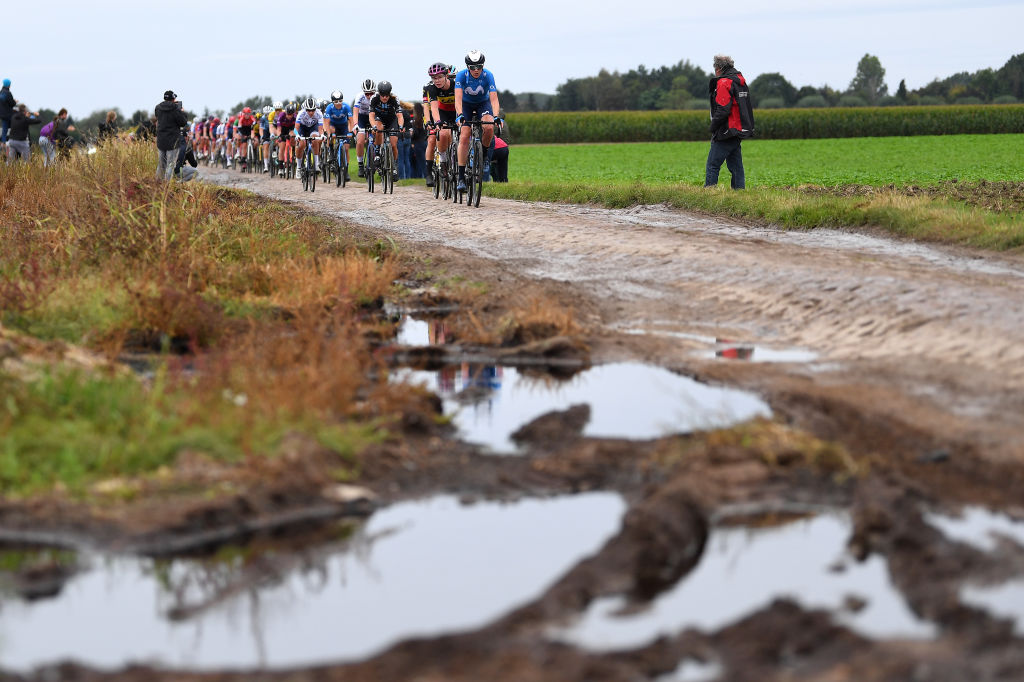
While it's only the first edition of Paris-Roubaix Femmes, the wait for a French winner on the cobbles of the Nord department goes on. Taking men's and women's races combined, there have now been 23 editions since the last home winner – Frédéric Guesdon back in 1997.
France actually had two riders in the chase on Saturday, as Movistar's Aude Biannic and Trek-Segafredo's Audrey Cordon-Ragot made up what was at one point a 16-woman second group.
While Cordon-Ragot – hailed as "incredible, really strong, always covering attacks" by her teammate, third-place finisher Elisa Longo Borghini – finished eighth in the velodrome, Biannic had a tougher time, falling with Ellen van Dijk and Christine Majerus on the muddy Camphin-en-Pévèle, and slumping to the infield grass in tears at the finish.
"My bike broke and then it was over for me," she said after the finish. "In the last 20 kilometres it was knife between the teeth to the finish. I had one leg to pedal on. I was crying because of the pain. I was in so much pain and was suffering so much. I really wanted to finish the race."
Biannic did make it to the end, alongside eight of her compatriots as nine more Frenchwomen either abandoned or missed the time cut. The wait for a French winner of Paris-Roubaix goes on. (DO)

Simone is a degree-qualified journalist that has accumulated decades of wide-ranging experience while working across a variety of leading media organisations. She joined Cyclingnews as a Production Editor at the start of the 2021 season and has now moved into the role of Australia Editor. Previously she worked as a freelance writer, Australian Editor at Ella CyclingTips and as a correspondent for Reuters and Bloomberg. Cycling was initially purely a leisure pursuit for Simone, who started out as a business journalist, but in 2015 her career focus also shifted to the sport.
